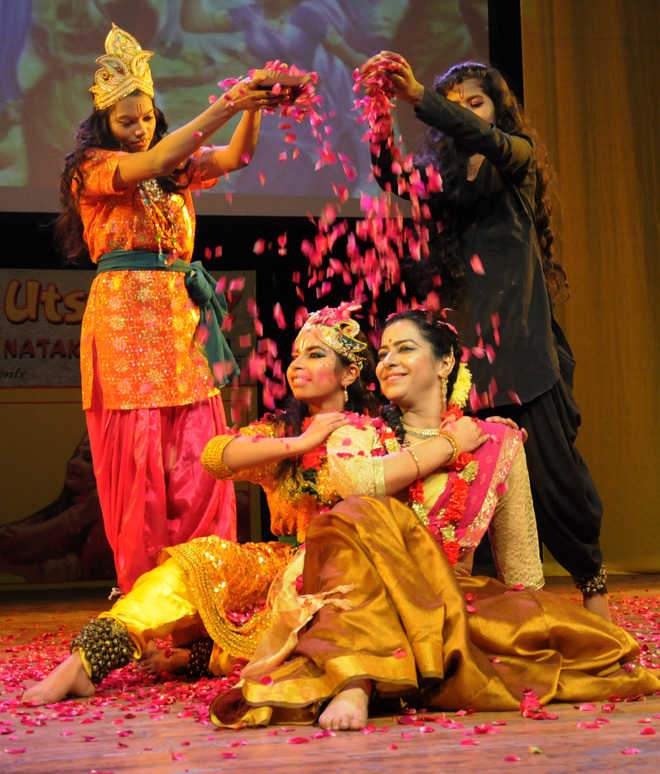Krishna’s life depicted through kathak
SD Sharma
Chandigarh, January 31
The Acharya Pratishtha group, Saharanpur, presented ballet ‘Krishna -The Nritya Maya Katha’ on the day two today of the ongoing ‘CSNA Basant Utsav-2017’ organised by the Chandigarh Sangeet Natak Akademi at Tagore Theatre here.
Choreographed and directed by Acharya Pratishtha, an acclaimed yoga and kathak maestro, the show had been staged more than 150 times in India and many other countries.
Akademi Chairman Kamal Arora welcomed the guests of honour — Sameer Mathur, IAS, Chief Information Commissioner, Haryana, and General (Retd) IP Singh.
In all, 14 kathak dancers delineated various sequences to depict the episodes related to the incarnation of Lord Krishna — birth and childhood ‘leelas’ such as ‘makhan chori’ ; love episodes with Radha; and ‘ Kansa vadha’.
The highlight of the performance were graceful dance mudras and body expressions by Acharya Pratishtha.
Classical vocal maestro Pandit Kaivalya Kumar will perform tomorrow.
Satirical Urdu play staged
A satirical Urdu play ‘Inna ki Awaaz’ was staged by the Alankar Theatre group at Randhawa auditorium.
The play defined the changing human psyche and brought into focus how the circumstances influence the perpetual change in one’s behavior.
Written by Syed Asghar Wajahat and directed by Chakresh Kumar, Bismillah Khan SNA Award winner, the play revolves around the life of Inna, a slave, employed as a labourer in the construction work for building a new palace for a tyrant king.
Gifted with divinely powers and melodious voice, Inna was immensely popular and enamored by one and all much to the agony of the king. On queen’s advise, the king succeeds in exploiting and making Inna as a minister in royal cabinet. After a while, the high position and power corrupted his mind and he ignored those who loved him. Inna lost his voice and popularity among the masses, which eased his dismissal by the king.
Gurbaksh enacted as Inna, Rajat Narad played the role of the king, Anchal was the queen, Qadil Khan a ‘daroga’ and Shamsheer was a ‘nartaki’.









